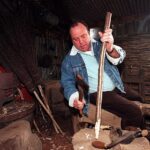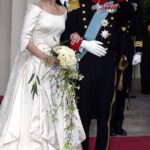He was recognized for his philanthropy, fascination with science, structure and fashionable know-how, and patronage of the humanities.
Within the early years of their marriage, Queen Victoria and Prince Albert had been additionally eager artists, and painted portraits of their kids, pets and literary scenes at Windsor Fort and Claremont, the place they lived away from the bustle of court docket.
It has now come to gentle that he was an ardent feminist and patronised numerous rising feminine artists all through his reign.
Sculptors Mary Thornycroft, Susan Durant and Henrietta Montalba and painters Helen Cordelia Angell and Elizabeth Butler all benefited from his help.
Her work is being featured within the upcoming exhibition Now You See Us: Ladies Artists in Britain 1520 – 1920 , which showcases the work of feminine artists from the Tudor court docket to the First World Struggle.

Queen Victoria and Prince Albert had been recognized for his or her philanthropy, fascination with science, structure and fashionable know-how, and patronage of the humanities

It has now emerged that they had been robust feminists who patronised many rising feminine artists throughout their reign. Above: An paintings by feminine sculptor Susan Durant, who was supported by Victoria and Albert
Curator Tabitha Barber mentioned: 'Throughout analysis for Tate Britain's new exhibition 'Now You See Us' it grew to become clear simply how far the British royal household has supported feminine artists all through historical past.
'Queen Victoria and Prince Albert had been avid collectors, notably of ladies's artistic endeavors, and bought and commissioned works by modern artists of the day.
'Her patronage reveals that there have been many ladies working as skilled artists in nineteenth century Britain, which can shock individuals in the present day.
'The royal help of Victoria and Albert was essential in creating knowledgeable id for these girls artists, establishing their names, enabling their works to be exhibited and fetch excessive costs, making a few of them fairly well-known!
'But many ladies confronted challenges of their working lives, and so by taking a better have a look at their careers we start to get a fuller image of what it was wish to be a feminine artist on this interval.'

When Elizabeth Butler's portray of British cavalry within the Crimea, 'Calling the Roll after an Engagement, Crimea', often known as Roll Name, was exhibited on the Royal Academy it triggered such a sensation that it wanted a police guard

The Scots Greys assault at Waterloo, 18 June 1815. The assault by the Royal Scots Greys cavalry regiment on the French forty fifth Infantry was immortalised on this well-known portray created in 1881 by Woman Elizabeth Butler.
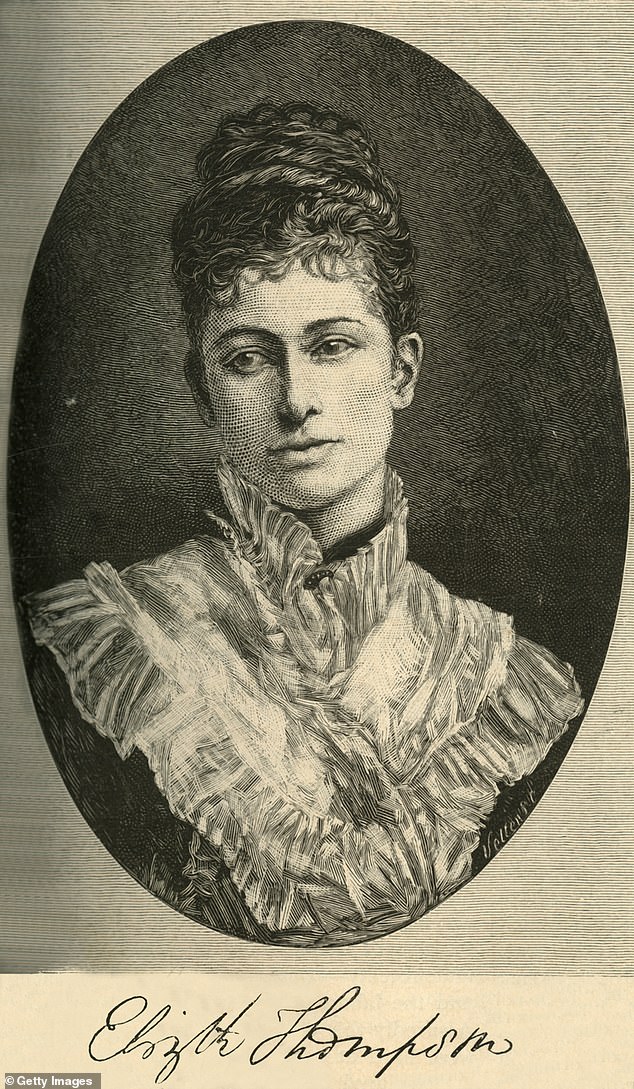
Butler was one of many few feminine painters to realize fame for historical past work. She died in 1933
The sculptor Mary Thornycroft was a specific favorite of Victoria and Albert, making a collection of artworks of their 9 kids and grandchildren for the couple’s birthday and Christmas presents.
Skilled by her father John Francis, who was Prince Albert's sculptor, she got here to royal consideration when her father took his sculpture 'Orphan Flower Lady' to Windsor for inspection.
Married to Thomas Thornycroft, a scholar of her father, she created busts of youngsters, life-size sculptures of their arms, arms and toes, and full-length portraits of youngsters in symbolic roles.
They had been captured for posterity by famend photographer Roger Fenton, alongside along with his sculpture of Princess Helena as 'Peace', which was displayed at Osborne Home.
She additionally painted Princess Louise as 'A lot', Prince Leopold as 'Fisher Boy' and Prince Arthur as 'Hunter'. The Arts Journal claimed that if there was an official place of sculptor to the Queen, Mrs Thornycroft could be its holder.
'Victoria herself was a eager artist, though not knowledgeable one, whereas her daughter Princess Louise skilled as a sculptor underneath Mary Thornycroft and in addition attended artwork college,' the curator mentioned.
One other favorite of the royal couple was Princess Louise's instructor, Susan Durant, who exhibited her painted photographs and material on the Royal Academy and the Society of Feminine Artists.

Equally in style with the royal couple was the watercolour painter Helen Cordelia Angell, who was appointed Flower Painter in Peculiar to Queen Victoria.
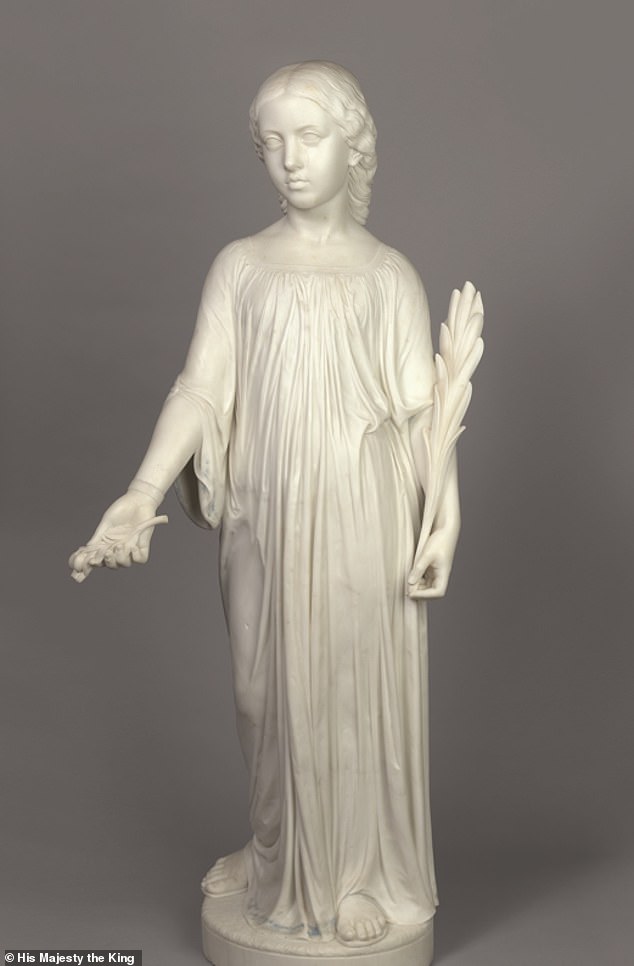
Princess Helena as Peace, 1856, by Mary Thornycroft. Thornycroft was a specific favorite of Victoria and Albert, making a collection of artworks of their 9 kids and grandchildren for the couple's birthday and Christmas presents.
She studied in Paris and England with the French sculptor Baron Henri de Triqueti, who grew to become her lover: that they had a son, Paul, born in 1869 from an extramarital affair.
One in all his most well-known works was a marble bust of Harriet Beecher Stowe, the American writer and abolitionist who wrote Uncle Tom's Cabin, and was a robust supporter of ladies's suffrage.
The third sculptor to learn from royal patronage was Henrietta Montalba, who got here from a household of outstanding artists: her three sisters, Clara, Ellen and Hilda, had been all painters.
She skilled with Princess Louise (later the Duchess of Argyll) on the Nationwide Artwork Coaching Faculty (now the Royal School of Artwork) in South Kensington, London, and so they grew to become lifelong mates.
She exhibited commonly on the Royal Academy. One critic described her portrait busts as 'memorable' and 'a uncommon triumph' which stands out among the many work of her contemporaries.
Equally in style among the many royal couple was the watercolour painter Helen Cordelia Angell, who was appointed Flower Painter in Peculiar to Queen Victoria.
A superb painter of flowers, birds and fruit, she exhibited her works on the Royal Academy and was a uncommon feminine member of the Royal Watercolour Society and the Royal Institute of Painters in Watercolour.
Recognized for her talent and precision, her work was regularly in comparison with that of William Henry Hunt – or 'Fowl's Nest' Hunt – who was considered the main artist within the style, and who himself regarded Angell as his 'sole successor'.

Venetian boy catching crabs, by Henrietta Skerrett, 1892-3. This work is on show within the new exhibition
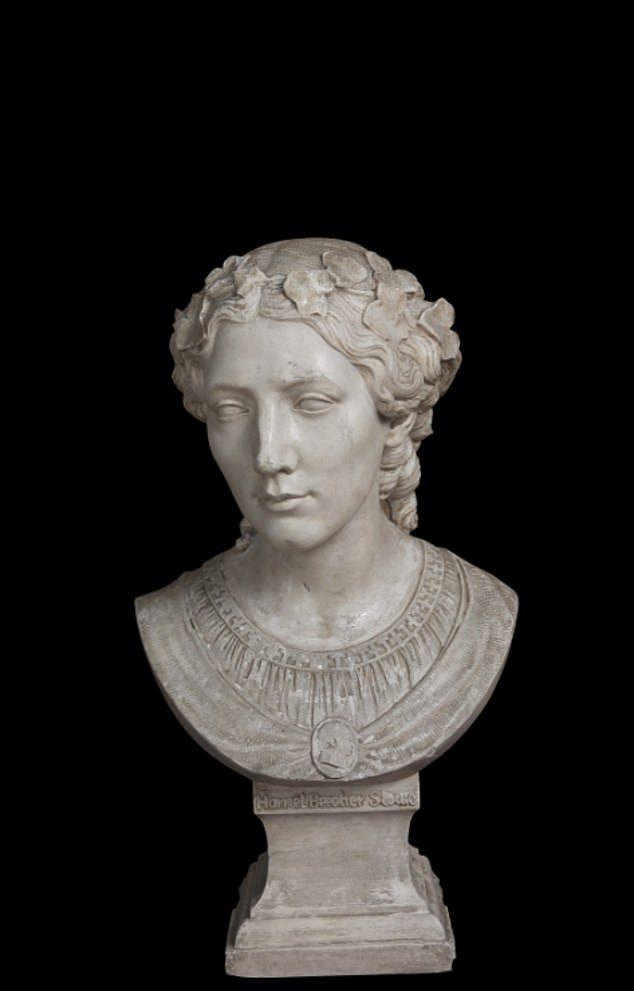
Harriet Beecher Stowe, photographed by Susan Durant in 1853. Durant was Princess Louise's instructor
There was one portray, nevertheless, that put the Queen on a collision course along with her son, the Prince of Wales and future King Edward VII.
When Elizabeth Butler's portray of British cavalry within the Crimea, 'Calling the Roll after an Engagement, Crimea', often known as Roll Name, was exhibited on the Royal Academy it triggered such a sensation that it wanted a police guard.
The artist had nervously offered her portray to the hanging committee and was shocked to listen to that they appreciated it with a ‘huzzah’ and hung it ‘on the dais’.
Lecturers supplied congratulations and the Prince of Wales wished to purchase it from its commissioner, Manchester industrialist Charles Galloway. However each reluctantly handed it over to Queen Victoria.
Now You See Us: Ladies Artists in Britain 1520 – 1920 will likely be on show at Tate Britain from 16 Might till 13 October.

